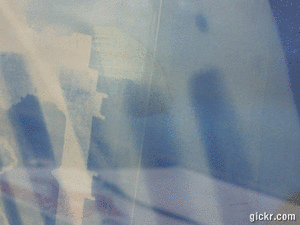Immaterial Architectures
Painting/Form for Reading Spaces/Intervals
Pattern and Chaos/Liminality/Tectonics
Architectural surface for a Library, raw materials, light, silence and solitude.
Christopher Wilmarth ; Poetics/Duality of Light and gravity
Other Architecture
Constructing Metaphysical Space
Wilmarth's art reveals his essential concern with the mystical and physical properties of light, especially the ways in which light evokes reverie and generates sensations of space and containment.
The Architecture of Natural Light : Henry Plummer
EVANESCENCE
Orchestration of light to mutate through time
Intensity and integrity of Wilmarth's practice/vision.
PROCESSION
Choreography of light/moving eye
VEILS OF GLASS
Refraction of light/diaphanous film
Wilmarth made possibly his strongest, most beautiful works on paper, exploring a new level of expression while retaining continuity with past work.
ATOMIZATION
Sifting of light/through a porous screen
These drawings also contain allusions to the human presence. Their haunting, foreboding quality is prefigured in the grave, austere tones of some of the glass and steel structures.
CANALIZATION
Channelling of light/through a hollow mass
The duality of light and shadow and contrasts between abstraction and representation continue to be central concerns in his final drawings.
ATMOSPHERIC SILENCE
Suffusion of light with a unified mood
Wilmarth's sculptures from the early 1980's are influenced by the poetry of Stephane Mallarme. To affirm Mallarme's emphasis on the spiritual, the artist used a simple ovoid form, evoking a multitude of symbols, including the human head. These ovoids were made of blown glass, which Wilmarth viewed as "frozen breath". The artist pursued this figurative impulse into the mid 1980s, combining the anthropomorphic ovoid shapes with the larger abstract forms of his earlier sculpture.
LUMINESCENCE
Materialization of light in physical matter
Wilmarth composed with planes of delicate colour and light, placing plates of blackened steel behind translucent sheets of etched glass imbued with a luminous, greenish cast.
"He employed a painterly technique that emphasized the tactility and fichness of his materials, which like an alchemist he persistently sought to transform. He continually examined the concept of duality: contrasts between light and shadow, transparency and opacity, heaviness and weightlessness, materiality and ethereality, form and spirit are repeatedly presented; the synthesis of geometric with organic forms, the range between abstraction and representation are constantly explored."
Laura Rosenstock, catalogue essay.
White Noise : Nocturnes of Silence




A Study of the relations between painting and the natural sciences in this century
C. H. Waddington
Adam Fuss
Home and the World
Strange Loops
Art, Science and Consciousness
An Exploration of Mind, Matter and Form through the Work of Susan Derges
Stephen Gaughan
The Music of Waves
The Poetry of Particles
Thoughts on Implicate Order for Susan Derges
Martin Kemp
Adam Fuss
Eugenia Perry
Rhetorical Silences/Strange Tools
the sensual energy of the dimension in which causality/aesthetics happens
Graham Harman, Timothy Morton
Paintings/Research/Archive/Art Practice
Cyanotype material,objects on canvas.
Russell Moreton 2018
https://www.flickr.com/photos/russellmoreton/40286364403/in/dateposted-public/

In his discussion of mediators, Gilles Deleuze (1995,121) describes being taken up in the motion of a big wave. He notes that instead of looking for 'points of origin' attention should be directed to mediators that enable a 'putting-into-orbit' that facilitate the movement of concepts, sensations and matter without recourse to origins or destinations.
Katve-Kaisa Kontturi uses the term 'intercessor' instead of 'mediator' as it aligns better with Deleuze's argument, where importance is placed not on mediating between already formulated shapes or beings, but on opening beings up to movement through a third actant.
For Deleuze (1995,125), Intercessors are about entering into or creating a series.
Gilles Deleuze. 1995, Negotioations, 1972-1990.
Translated by Martin Joughin. New York: Columbia University Press.
Notes, Introduction
Ways of Following
Art, Materiality, Collaboration
Katve-Kaisa Kontturi
Open Humanities Press
London 2018
Immaterial Architectures : Raveningham Pavilion #1
DSC_3283 Raku Beakers : Lead Glaze/Yellow Ochre
DSC_4049 Field Aesthetic : Causality/Layered Drawings
DSC_3776 Sacred/Secular : Vessels on Painting
DSC_4097 Field Aesthetic : Causality/Layered Drawings
DSC_8923 Artists Studio : Collage/Photography/Painting
Outpost Studies
Norwich
UK




















































